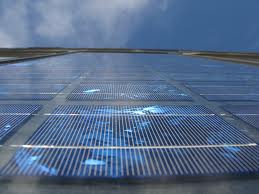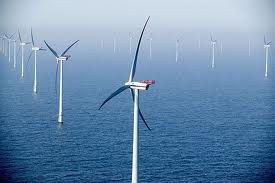Luisa Cristini, PhD., University of Hawaii at Manoa

Solar farm by theurbn
Energy systems are vulnerable to climate change. Assessing the various scenarios that could occur is a great challenge, due to the number of climate variables and the interconnection between the various energy sectors. A review of the scientific literature on this topic that was just been published, helps understand the many implications of global warming for the energy sector. In addition to energy resources, climate change will likely affect supply, distribution, use and infrastructure in addition to cross-sector effects.
Energy resources are the primary energy available, such as fossil fuels stocks and renewable energy fluxes. Climate change may affect the hydrological cycle and, therefore, hydropower generation because it depends on water availability. The accessibility to wind power depends on weather conditions, in particular on the geographical distribution and variability of wind speed. Liquid biofuels are vulnerable to changes in climate variables (such as temperature, rainfall, CO2 levels, drought, frost and storm frequencies) that affect crop used as raw materials to produce ethanol and biodiesel. Changing atmospheric water vapor content and cloud characteristics could affect solar energy resources and electricity generation from photovoltaic and concentrated solar power arrays. Energy production from ocean waves can be modified by wind changes. Although climate change will not directly affect oil and natural gas resources, it may affect producing areas (e.g., by melting permafrost use of this energy source can threaten the structural integrity of infrastructure built upon it).

Wind turbines by greenhackz.com
Energy supply refers to the technologies used to convert primary energy resources into final energy sources used to meet specific services. Hourly, daily or seasonal variability of wind speeds significantly affects the energy produced from wind turbines making the production of wind power highly susceptible to changing wind patterns resulting from climate change. Increased air temperature can modify photovoltaic cell efficiency and reduce electrical generation from solar energy. Lower water availability caused by increased evaporation due to rising temperatures and lower precipitation levels can reduce crop productivity and energy production from liquid biofuels.
Alterations in the quantity and quality of water are the main way through which climate change could affect thermal power generation. Oil and gas production facilities in low-lying coastal areas and the outer continental shelf can be affected by sea level rise, storm intensity, wave regime, air and water temperature, precipitation patterns, extreme weather events, changes in CO2 levels and ocean acidity. The possible increases in frequency and intensity of rainfall may lead to changes in river and groundwater levels and flooding, which could cause changes in coal quality and coal-handling.
The distribution of energy extends for thousands of kilometers and can therefore be exposed to weather phenomena that may cause transmission power line failures and affect gas transmission systems. These include extreme winds and ice loads, combined wind-on-ice loads, lightning strikes, conductor vibrations and galloping, avalanches, landslides, flooding, permafrost thawing and other extreme meteorological events. In addition, distribution systems are vulnerable to meteorologically-induced factors, such as falling trees and higher temperatures.
Climate change can affect energy use but will vary across regions. Higher temperatures imply lower demand for heating and higher demand for cooling. Therefore tropical regions will especially experience increased use of energy for cooling. Climate change can also affect the water and electricity demand in industries (for refrigeration) and in agriculture (for irrigation). Finally, changes in temperature will increase use of air conditioning in vehicles, and therefore increase the use of fuel.
The energy infrastructure, especially oil and gas related facilities that are situated in low-lying coastal areas will be more vulnerable to sea level rise and related coastal erosion as well as extreme weather events such as flooding and hurricanes. Inland structures also are vulnerable as there may be severe weather events and changes in water availability.
Last, cross-sectors will affect other economic and natural systems that will then affect the supply and demand for energy. The effects of climate change need to be assessed in an integrated way, including the many complex inter-relationships within the energy sector. The two main cross-sector affected by climate change are competition for water resources (in electricity generation, oil refining and irrigation of energy crops) and land competition (for biofuels production).
Despite energy being one of the key systems for social and economic development, its management often does not incorporate the effects of future climate variations in planning and operation. Assessing the vulnerabilities of energy systems and incorporating them into long-term energy planning and operation is imperative for the development of policies aiming to cope with climate change. Past experience on climate variability together with climate and energy system modeling are complementary ways to understand the vulnerability to climate change. To this end IEDRO collects and digitizes historic weather data.
Reference
Schaeffer, R., Szklo, A. S., Pereira de Lucena, A. F., Moreira Cesar Borba, B. S., Pupo Nogueira, L. P., Fleming, F. P., Troccoli, A., et al. (2011). Energy sector vulnerability to climate change: A review. Energy, 1-12. Elsevier Ltd. doi:10.1016/J.Energy.2011.11.056.

Planning Energy in Times of Climate Change | International Environmental Data Rescue Organization – just great!
This is an informative article. I think the United States need to increase its affords in creating a cost effective environment for homeowners to install green energy systems. I would love to see a post on this.